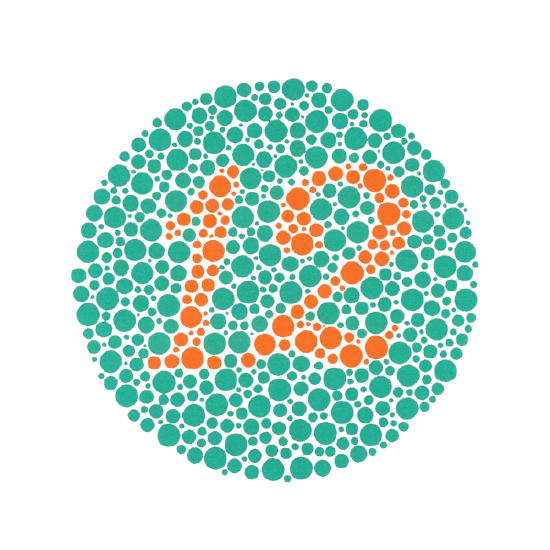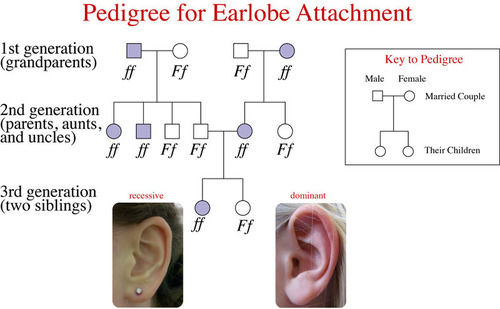3.2: Mendelian Inheritance
- Page ID
- 12066
\( \newcommand{\vecs}[1]{\overset { \scriptstyle \rightharpoonup} {\mathbf{#1}} } \)
\( \newcommand{\vecd}[1]{\overset{-\!-\!\rightharpoonup}{\vphantom{a}\smash {#1}}} \)
\( \newcommand{\dsum}{\displaystyle\sum\limits} \)
\( \newcommand{\dint}{\displaystyle\int\limits} \)
\( \newcommand{\dlim}{\displaystyle\lim\limits} \)
\( \newcommand{\id}{\mathrm{id}}\) \( \newcommand{\Span}{\mathrm{span}}\)
( \newcommand{\kernel}{\mathrm{null}\,}\) \( \newcommand{\range}{\mathrm{range}\,}\)
\( \newcommand{\RealPart}{\mathrm{Re}}\) \( \newcommand{\ImaginaryPart}{\mathrm{Im}}\)
\( \newcommand{\Argument}{\mathrm{Arg}}\) \( \newcommand{\norm}[1]{\| #1 \|}\)
\( \newcommand{\inner}[2]{\langle #1, #2 \rangle}\)
\( \newcommand{\Span}{\mathrm{span}}\)
\( \newcommand{\id}{\mathrm{id}}\)
\( \newcommand{\Span}{\mathrm{span}}\)
\( \newcommand{\kernel}{\mathrm{null}\,}\)
\( \newcommand{\range}{\mathrm{range}\,}\)
\( \newcommand{\RealPart}{\mathrm{Re}}\)
\( \newcommand{\ImaginaryPart}{\mathrm{Im}}\)
\( \newcommand{\Argument}{\mathrm{Arg}}\)
\( \newcommand{\norm}[1]{\| #1 \|}\)
\( \newcommand{\inner}[2]{\langle #1, #2 \rangle}\)
\( \newcommand{\Span}{\mathrm{span}}\) \( \newcommand{\AA}{\unicode[.8,0]{x212B}}\)
\( \newcommand{\vectorA}[1]{\vec{#1}} % arrow\)
\( \newcommand{\vectorAt}[1]{\vec{\text{#1}}} % arrow\)
\( \newcommand{\vectorB}[1]{\overset { \scriptstyle \rightharpoonup} {\mathbf{#1}} } \)
\( \newcommand{\vectorC}[1]{\textbf{#1}} \)
\( \newcommand{\vectorD}[1]{\overrightarrow{#1}} \)
\( \newcommand{\vectorDt}[1]{\overrightarrow{\text{#1}}} \)
\( \newcommand{\vectE}[1]{\overset{-\!-\!\rightharpoonup}{\vphantom{a}\smash{\mathbf {#1}}}} \)
\( \newcommand{\vecs}[1]{\overset { \scriptstyle \rightharpoonup} {\mathbf{#1}} } \)
\( \newcommand{\vecd}[1]{\overset{-\!-\!\rightharpoonup}{\vphantom{a}\smash {#1}}} \)
\(\newcommand{\avec}{\mathbf a}\) \(\newcommand{\bvec}{\mathbf b}\) \(\newcommand{\cvec}{\mathbf c}\) \(\newcommand{\dvec}{\mathbf d}\) \(\newcommand{\dtil}{\widetilde{\mathbf d}}\) \(\newcommand{\evec}{\mathbf e}\) \(\newcommand{\fvec}{\mathbf f}\) \(\newcommand{\nvec}{\mathbf n}\) \(\newcommand{\pvec}{\mathbf p}\) \(\newcommand{\qvec}{\mathbf q}\) \(\newcommand{\svec}{\mathbf s}\) \(\newcommand{\tvec}{\mathbf t}\) \(\newcommand{\uvec}{\mathbf u}\) \(\newcommand{\vvec}{\mathbf v}\) \(\newcommand{\wvec}{\mathbf w}\) \(\newcommand{\xvec}{\mathbf x}\) \(\newcommand{\yvec}{\mathbf y}\) \(\newcommand{\zvec}{\mathbf z}\) \(\newcommand{\rvec}{\mathbf r}\) \(\newcommand{\mvec}{\mathbf m}\) \(\newcommand{\zerovec}{\mathbf 0}\) \(\newcommand{\onevec}{\mathbf 1}\) \(\newcommand{\real}{\mathbb R}\) \(\newcommand{\twovec}[2]{\left[\begin{array}{r}#1 \\ #2 \end{array}\right]}\) \(\newcommand{\ctwovec}[2]{\left[\begin{array}{c}#1 \\ #2 \end{array}\right]}\) \(\newcommand{\threevec}[3]{\left[\begin{array}{r}#1 \\ #2 \\ #3 \end{array}\right]}\) \(\newcommand{\cthreevec}[3]{\left[\begin{array}{c}#1 \\ #2 \\ #3 \end{array}\right]}\) \(\newcommand{\fourvec}[4]{\left[\begin{array}{r}#1 \\ #2 \\ #3 \\ #4 \end{array}\right]}\) \(\newcommand{\cfourvec}[4]{\left[\begin{array}{c}#1 \\ #2 \\ #3 \\ #4 \end{array}\right]}\) \(\newcommand{\fivevec}[5]{\left[\begin{array}{r}#1 \\ #2 \\ #3 \\ #4 \\ #5 \\ \end{array}\right]}\) \(\newcommand{\cfivevec}[5]{\left[\begin{array}{c}#1 \\ #2 \\ #3 \\ #4 \\ #5 \\ \end{array}\right]}\) \(\newcommand{\mattwo}[4]{\left[\begin{array}{rr}#1 \amp #2 \\ #3 \amp #4 \\ \end{array}\right]}\) \(\newcommand{\laspan}[1]{\text{Span}\{#1\}}\) \(\newcommand{\bcal}{\cal B}\) \(\newcommand{\ccal}{\cal C}\) \(\newcommand{\scal}{\cal S}\) \(\newcommand{\wcal}{\cal W}\) \(\newcommand{\ecal}{\cal E}\) \(\newcommand{\coords}[2]{\left\{#1\right\}_{#2}}\) \(\newcommand{\gray}[1]{\color{gray}{#1}}\) \(\newcommand{\lgray}[1]{\color{lightgray}{#1}}\) \(\newcommand{\rank}{\operatorname{rank}}\) \(\newcommand{\row}{\text{Row}}\) \(\newcommand{\col}{\text{Col}}\) \(\renewcommand{\row}{\text{Row}}\) \(\newcommand{\nul}{\text{Nul}}\) \(\newcommand{\var}{\text{Var}}\) \(\newcommand{\corr}{\text{corr}}\) \(\newcommand{\len}[1]{\left|#1\right|}\) \(\newcommand{\bbar}{\overline{\bvec}}\) \(\newcommand{\bhat}{\widehat{\bvec}}\) \(\newcommand{\bperp}{\bvec^\perp}\) \(\newcommand{\xhat}{\widehat{\xvec}}\) \(\newcommand{\vhat}{\widehat{\vvec}}\) \(\newcommand{\uhat}{\widehat{\uvec}}\) \(\newcommand{\what}{\widehat{\wvec}}\) \(\newcommand{\Sighat}{\widehat{\Sigma}}\) \(\newcommand{\lt}{<}\) \(\newcommand{\gt}{>}\) \(\newcommand{\amp}{&}\) \(\definecolor{fillinmathshade}{gray}{0.9}\)
What number can you see?
Red-green colorblindness is a common inherited trait in humans. About 1 in 10 men have some form of color blindness, however, very few women are color blind. Why?
Mendelian Inheritance in Humans
Characteristics that are encoded in DNA are called genetic traits. Different types of human traits are inherited in different ways. Some human traits have simple inheritance patterns like the traits that Gregor Mendel studied in pea plants. Other human traits have more complex inheritance patterns.
Mendelian inheritance refers to the inheritance of traits controlled by a single gene with two alleles, one of which may be dominant to the other. Not many human traits are controlled by a single gene with two alleles, but they are a good starting point for understanding human heredity. How Mendelian traits are inherited depends on whether the traits are controlled by genes on autosomes or the X chromosome.
Autosomal Traits
Autosomal traits are controlled by genes on one of the 22 human autosomes. Consider earlobe attachment. A single autosomal gene with two alleles determines whether you have attached earlobes or free-hanging earlobes. The allele for free-hanging earlobes (F) is dominant to the allele for attached earlobes (f). Other single-gene autosomal traits include widow’s peak and hitchhiker’s thumb. The dominant and recessive forms of these traits are shown in the Figure below. Which form of these traits do you have? What are your possible genotypes for the traits?
The chart in the Figure below is called a pedigree. It shows how the earlobe trait was passed from generation to generation within a family. Pedigrees are useful tools for studying inheritance patterns.
 Having free-hanging earlobes is an autosomal dominant trait. This figure shows the trait and how it was inherited in a family over three generations. Shading indicates people who have the recessive form of the trait. Look at (or feel) your own earlobes. Which form of the trait do you have? Can you tell which genotype you have?
Having free-hanging earlobes is an autosomal dominant trait. This figure shows the trait and how it was inherited in a family over three generations. Shading indicates people who have the recessive form of the trait. Look at (or feel) your own earlobes. Which form of the trait do you have? Can you tell which genotype you have?Other single-gene autosomal traits include widow's peak and hitchhiker's thumb. The dominant and recessive forms of these traits are shown in the Figure below. Which form of these traits do you have? What are your possible genotypes for the traits?
 Widow's peak and hitchhiker's thumb are dominant traits controlled by a single autosomal gene.
Widow's peak and hitchhiker's thumb are dominant traits controlled by a single autosomal gene.Sex-Linked Traits
Traits controlled by genes on the sex chromosomes are called sex-linked traits, or X-linked traits in the case of the X chromosome. Single-gene X-linked traits have a different pattern of inheritance than single-gene autosomal traits. Do you know why? It’s because males have just one X chromosome. In addition, they always inherit their X chromosome from their mother, and they pass it on to all their daughters but none of their sons. This is illustrated in the Figure below.

Inheritance of Sex Chromosomes. Mothers pass only X chromosomes to their children. Fathers always pass their X chromosome to their daughters and their Y chromosome to their sons. Can you explain why fathers always determine the sex of the offspring?
Because males have just one X chromosome, they have only one allele for any X-linked trait. Therefore, a recessive X-linked allele is always expressed in males. Because females have two X chromosomes, they have two alleles for any X-linked trait. Therefore, they must inherit two copies of the recessive allele to express the recessive trait. This explains why X-linked recessive traits are less common in females than males. An example of a recessive X-linked trait is red-green color blindness. People with this trait cannot distinguish between the colors red and green. More than one recessive gene on the X chromosome codes for this trait, which is fairly common in males but relatively rare in females (Figure below).
 Pedigree for Color Blindness. Color blindness is an X-linked recessive trait. Mothers pass the recessive allele for the trait to their sons, who pass it to their daughters.
Pedigree for Color Blindness. Color blindness is an X-linked recessive trait. Mothers pass the recessive allele for the trait to their sons, who pass it to their daughters.Summary
- A minority of human traits are controlled by single genes with two alleles.
- They have different inheritance patterns depending on whether they are controlled by autosomal or X-linked genes.
Review
- Describe the inheritance pattern for a single-gene autosomal dominant trait, such as free-hanging earlobes.
- Draw a pedigree for hitchhiker’s thumb. Your pedigree should cover at least two generations and include both dominant and recessive forms of the trait. Label the pedigree with genotypes, using the letter H to represent the dominant allele for the trait and the letter h to represent the recessive allele.
- Why is a recessive X-linked allele always expressed in males?
- What is necessary for a recessive X-linked allele to be expressed in females?
- What is an example of a recessive X-linked trait?
Resources
| Image | Reference | Attributions |
 |
[Figure 1] | Credit: Jodi So Source: CK-12 Foundation License: CC BY-NC 3.0 |
 |
[Figure 2] | Credit: Dominant: User:Covalent/Wikipedia; Recessive: Claire P.; pedigree created by Sam McCabe (CK-12 Foundation) Source: Dominant: commons.wikimedia.org/wiki/File:Earcov.JPG ; Recessive: www.flickr.com/photos/rockinfree/4939042632 ; commons.wikimedia.org/wiki/File:Earcov.JPG ; Recessive: www.flickr.com/photos/rockinfree/4939042632 License: Dominant: Public Domain; Recessive: CC BY 2.0 |
 |
[Figure 3] | Credit: Left to right: Image copyright Alberto Zornetta, 2014; Image copyright iko, 2014; Eva Blue; Sara Reid Source: Left to right: http://www.shutterstock.com ; http://www.shutterstock.com ; http://www.flickr.com/photos/evablue/6184132023 ; http://www.flickr.com/photos/29406311@N04/3120877348/ ; http://www.shutterstock.com ; http://www.shutterstock.com ; http://www.flickr.com/photos/evablue/6184132023 ; http://www.flickr.com/photos/29406311@N04/3120877348/ License: Left to right: Used under license from Shutterstock.com, Used under license from Shutterstock.com; CC BY 2.0; CC BY 2.0 |
 |
[Figure 4] | Credit: Mariana Ruiz Villarreal (LadyofHats) for CK-12 Foundation;Yassine Mrabet, based on image by the National Institutes of Health Source: CK-12 Foundation ; commons.wikimedia.org/w/index.php?title=File:ABO_system_codominance.svg License: CC BY-NC 3.0; Public Domain |
 |
[Figure 5] | Credit: Jodi So;Yassine Mrabet, based on image by the National Institutes of Health Source: CK-12 Foundation ; commons.wikimedia.org/w/index.php?title=File:ABO_system_codominance.svg License: CC BY-NC 3.0; Public Domain |

